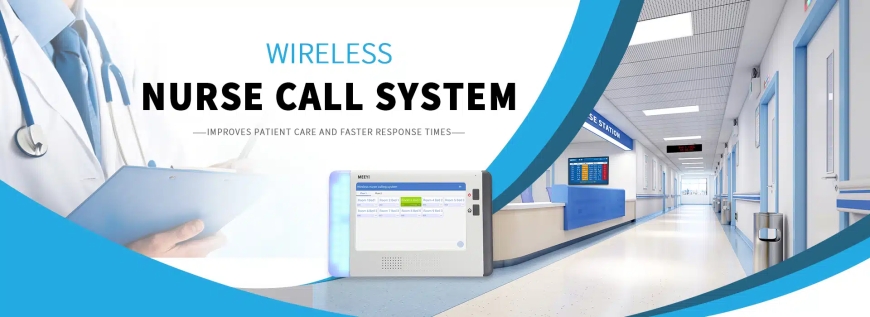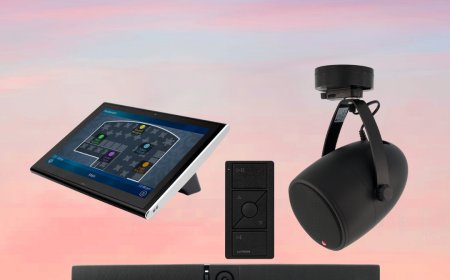How Wireless Nurse Call Systems Enhance Staff Responsiveness
Explore how wireless nurse call systems enhance patient satisfaction through improved communication, reduced response times, and personalized care in healthcare settings

In the fast-paced environment of healthcare, timely and effective communication is critical. One of the most significant advancements in enhancing communication in medical settings is the implementation ofwireless nurse call systems. These systems not only streamline interactions between patients and healthcare staff but also significantly improve staff responsiveness. This article explores how wireless nurse call systems enhance responsiveness, the various features that contribute to their effectiveness, and the overall impact on patient care.
Understanding Wireless Nurse Call Systems
Wireless nurse call systems facilitate communication in healthcare settings by allowing patients to alert nursing staff with the push of a button. Unlike traditional wired systems, which can be cumbersome and limited in functionality, wireless systems offer enhanced flexibility and mobility. This technology allows for real-time communication, helping healthcare providers respond quickly to patient needs.
Key Components of Wireless Nurse Call Systems
Patient Call Buttons: Installed in patient rooms, restrooms, and common areas, these buttons enable patients to easily request assistance.
Mobile Devices for Staff: Nurses and healthcare providers carry mobile devices that receive alerts, ensuring they can respond quickly, regardless of their location within the facility.
Central Management Console: This console monitors all incoming calls and alerts, providing a real-time overview of patient requests and staff responses.
Integration Features: Many wireless nurse call systems can integrate with existing electronic health record (EHR) systems, alarm management tools, and other healthcare applications, streamlining workflows.
Analytics and Reporting Tools: These features allow healthcare facilities to track response times and patient satisfaction, providing valuable insights for quality improvement.
The Importance of Staff Responsiveness
Staff responsiveness is a critical component of quality patient care. When healthcare staff can respond quickly to patient needs, it leads to:
Improved Patient Safety: Rapid responses to patient alerts can prevent complications and ensure timely interventions.
Enhanced Patient Satisfaction: Patients who feel their needs are addressed promptly are more likely to report higher satisfaction levels.
Better Clinical Outcomes: Timely care can lead to improved health outcomes, reduced hospital stays, and lower readmission rates.
Increased Staff Morale: When staff members can efficiently manage their responsibilities, it fosters a positive work environment and reduces stress levels.
How Wireless Nurse Call Systems Enhance Staff Responsiveness
1. Real-Time Communication
One of the primary advantages of wireless nurse call systems is their ability to facilitate real-time communication. Unlike traditional systems that may rely on wired connections or central stations, wireless systems ensure that alerts are received instantly on mobile devices.
Immediate Alerts: When a patient presses a call button, the alert is sent directly to the nurses mobile device, allowing for immediate awareness of the situation.
Location-Based Notifications: Many wireless systems provide location-based alerts, indicating where the call originated, which helps nurses prioritize their responses.
2. Mobility and Flexibility
Wireless nurse call systems empower healthcare providers with mobility. Nurses are no longer tethered to a central station; instead, they can move freely throughout the facility while remaining connected to patient requests.
Enhanced Accessibility: Nurses can respond to alerts from anywhere within the facility, ensuring that they are always available for patient needs.
Improved Workflow: The ability to move freely allows nurses to complete other tasks while remaining responsive to patient calls, thus optimizing their workflow.
3. Integration with Other Systems
Wireless nurse call systems can often integrate seamlessly with existing healthcare technologies, such as EHRs and alarm management systems. This integration further enhances responsiveness.
Access to Patient Information: Nurses can access vital patient information immediately upon receiving an alert, allowing them to assess the situation before arriving at the patients location.
Streamlined Workflows: Integration with alarm management systems helps reduce alarm fatigue, allowing nurses to focus on high-priority alerts and respond more effectively.
4. Data Analytics and Performance Tracking
Wireless nurse call systems often come equipped with analytics and reporting tools that provide insights into staff responsiveness and patient care.
Monitoring Response Times: Facilities can track how quickly staff respond to calls, enabling them to identify trends and areas for improvement.
Quality Improvement Initiatives: By analyzing response data, healthcare organizations can implement targeted initiatives to enhance staff performance and patient care.
5. Enhanced Patient Engagement
Wireless nurse call systems can improve patient engagement, which in turn influences staff responsiveness.
Empowered Patients: When patients feel they have a direct line of communication with their caregivers, they are more likely to speak up about their needs, leading to quicker responses.
Feedback Mechanisms: Many systems allow patients to provide feedback on their care experience, which can help staff identify areas for enhancement.
Best Practices for Implementing Wireless Nurse Call Systems
1. Conduct a Needs Assessment
Before implementing a wireless nurse call system, it is essential to conduct a thorough needs assessment. Engage healthcare staff, patients, and administrators to identify specific needs and challenges that the system should address.
2. Choose the Right System
Select a wireless nurse call system that aligns with your facilitys needs. Consider factors such as ease of use, integration capabilities, and the specific features that will enhance staff responsiveness.
3. Provide Comprehensive Training
Training is critical to the successful implementation of a wireless nurse call system. Ensure that all staff members are comfortable using the system, understand its features, and know how to respond to alerts effectively.
4. Monitor and Evaluate System Performance
Regularly monitor system performance and gather feedback from staff and patients. Use this information to identify areas for improvement and make necessary adjustments to enhance responsiveness.
5. Foster a Culture of Responsiveness
Encourage a culture of responsiveness within your healthcare facility. Recognize and reward staff members who demonstrate exceptional responsiveness to patient needs, reinforcing the importance of timely care.
Case Study: Enhancing Responsiveness with Wireless Nurse Call Systems
Facility Overview
A large urban hospital faced challenges with response times to patient calls due to outdated wired nurse call systems. Patients reported dissatisfaction with wait times, and staff struggled to manage their workload effectively.
Implementation of Wireless Nurse Call Systems
Needs Assessment: The hospital conducted focus groups with staff and patients to identify communication challenges and specific requirements.
System Selection: They chose a wireless nurse call system that offered mobile alerts, integration capabilities with EHR, and analytics features.
Training: Comprehensive training sessions were held for all nursing staff, ensuring they understood how to use the new system effectively.
Monitoring: The hospital implemented a monitoring system to track response times and staff performance.
Results
After implementing the wireless nurse call system, the hospital saw a 50% reduction in response times and significant improvements in patient satisfaction scores. Staff reported feeling more empowered and less stressed, leading to better overall morale.
Conclusion
Wireless nurse call systems are essential tools for enhancing staff responsiveness in healthcare settings. By facilitating real-time communication, providing mobility, integrating with existing systems, and offering data analytics, these technologies significantly improve the ability of healthcare providers to respond to patient needs. Implementing a wireless nurse call system not only enhances patient safety and satisfaction but also fosters a positive work environment for staff. As healthcare continues to evolve, investing in effective communication solutions will be paramount to delivering high-quality patient care..









































